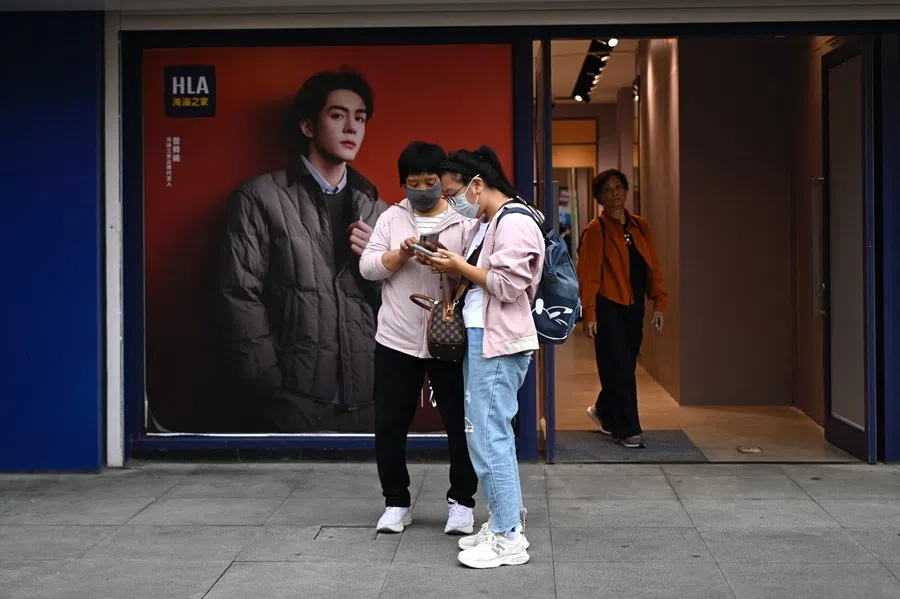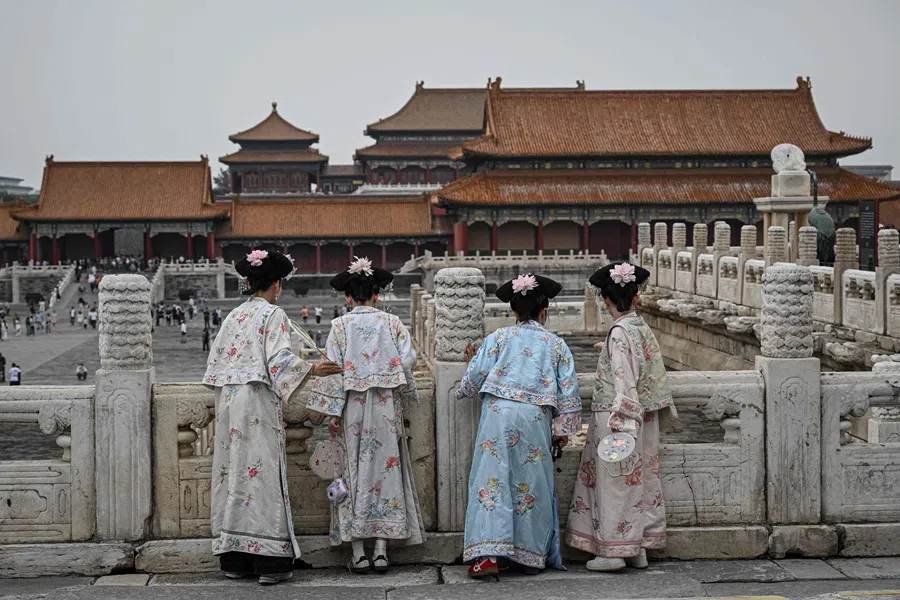‘Brainless’ but satisfying: How Chinese micro-dramas are taking over our screens
The ubiquity of mobile phones has driven the rapid growth of Chinese micro-dramas, with a diverse audience that spans even to the US. Chinese academic Tang Yonghua takes a look at why people are paying for cheesy plots and dated values in these “brainless” yet satisfying escapes from reality.

Chinese micro-dramas have amassed around 700 million viewers in China. Over 50% of them are under 40, with an even split between male and female. In terms of education level, nearly 40% have a bachelor’s degree or higher. Indeed, watching micro-dramas has become a national phenomenon.
Fitting for the lifestyle of the modern viewer
Why do the Chinese love micro-dramas? It is primarily due to the shift in media.
Modern life revolves around mobile phones, and the length of each episode and the pace of plot development in micro-dramas suit the lifestyle of mobile phone users. The entire short drama is released all at once, allowing viewers to freely control the playback on their phones and engage through comments, fostering a close and interactive connection between the audience, the characters and the actors.
Moreover, micro-dramas are continuously delivered, with algorithms seamlessly recommending shows based on viewers’ preferences — as long as they stay engaged, the viewing experience can go on endlessly.
Villains and petty characters in micro-dramas are often beyond redemption and must not be forgiven.
Another key factor is the “satisfaction” micro-dramas deliver. They do not strive for deep content but instead focus on fulfilling emotional needs. The plot is not driven by the protagonist’s inner struggles; rather, the main character has a consistent personality and straightforward emotions. If betrayed by a lover, no matter how devoted they once were, forgiveness is simply off the table.
Villains and petty characters in micro-dramas are often beyond redemption and must not be forgiven. Moreover, micro-dramas tend towards immediate vengeance, sparing the audience from feeling “emotionally abused” or aggrieved.

Secondly, the pacing of micro-dramas resembles that of video games, with protagonists navigating a series of rapid challenges. Modern-day storylines often jump between settings — hotels, job interviews, dance halls, luxury boutiques, auctions, class reunions, contract signings, and more — where key antagonists repeatedly appear. This not only tests the protagonist, but also offers viewers the satisfying thrill of levelling up and defeating enemies along the way.
Additionally, even if the hero wins against the odds, they often enjoy the pleasures of fame and fortune with the modest mindset of an average worker.
They derive satisfaction from derisively laughing at “brainless” scenes, imagining themselves handling such situations far better.
Many period dramas feature protagonists who quickly climb the social ladder but ultimately long to leave the big cities for a simpler life. Some workplace dramas depict leads getting rich through “smart shortcuts” or even after multiple resignations. These characters aren’t eager to lead the pack as their bosses expect; rather than simply wanting to do whatever they please, they’re portrayed as following their hearts — a quality that resonates deeply with everyday employees.
Finally, viewers empathise with micro-drama characters while simultaneously feeling intellectually and emotionally superior. They derive satisfaction from derisively laughing at “brainless” scenes, imagining themselves handling such situations far better.
60% revenue from US market
Why did micro-dramas develop so rapidly in China?
First, let’s consider the cost. Thanks to China’s relatively low labour expenses, producing a micro-drama can cost as little as a few hundred thousand RMB. By 2025, over 100,000 companies in China were engaged in micro-drama production, with 80% of them founded within the past five years.

Second, the market: Chinese micro-dramas have access to a domestic audience of over 1.1 billion internet users, with the market expected to surpass 100 billion RMB by 2027.
Third, resources: Chinese micro-dramas are strongly supported by online literature, providing rich resources for scripts. The influx of professional film and television talent has also helped Chinese micro-dramas quickly move past their early trial stage, perfecting the filming techniques, storytelling pace, emotional tone and visual style that define the genre.
The US market is growing rapidly, accounting for over 60% of China’s overseas micro-drama revenue.
Mobile phones have become an essential item for all walks of life, and everyone craves emotional satisfaction as well; it is understandable why Chinese micro-dramas are popular overseas. It is estimated that the potential market size for Chinese micro-dramas abroad could hit the billion-dollar range.
The US market is growing rapidly, accounting for over 60% of China’s overseas micro-drama revenue. American audiences pay even more than domestic users for boss-employee romance content: the more outrageous it is, the more they love it.
This is not surprising. Such content is in line with the daydreams of common folks who yearn for wealth and love, and there is no lack of such works in Hollywood (Roman Holiday, Pretty Woman and Notting Hill). Chinese micro-dramas are bringing these daydreams to mobile screens, offering viewers a kind of emotional payoff that’s rarely found in Western dramas.
Hackneyed formulas
Could this be considered a form of cultural soft power? In a way, yes. The greatest value of micro-dramas lies in how they reflect both the realism and optimism of the Chinese people.
On the one hand, Chinese people are very realistic, understanding that one’s wealth, status and background make a difference, affecting even the purest and closest relationships. On the other hand, they reject the idea that anyone is inherently superior, embracing Chinese sayings like “Do not despise the young for their poverty” (莫欺少年穷) and “Are kings and nobles born different?” (王侯将相宁有种乎).
They believe that ordinary people can also rise against the odds when given the opportunity. Micro-dramas aim to provide such opportunities: be it through time travel, rebirth, divine intervention, unlocking a power-up system or a sudden discovery of a wealthy lineage.
In outstanding works, we see how fantastical storylines mirror real-life struggles, and how ordinary Chinese people keep a down-to-earth attitude and a sense of humour even as they imagine wealth and success.

These are, of course, daydreams, but they may not necessarily detach us from reality. In outstanding works, we see how fantastical storylines mirror real-life struggles, and how ordinary Chinese people keep a down-to-earth attitude and a sense of humour even as they imagine wealth and success.
We also witness the younger generation’s efforts to reshape emotional relationships between tradition and modernity. For example, female leads in boss-employee romances or time-travel dramas often combine modern feminist awareness with the gentle resilience of traditional Chinese women, exploring new possibilities in life.
While these stories may not have the deep philosophical explorations of high-brow literature, they pulse with a vibrant energy that resonates with universal human nature and reflects the character of a nation. If micro-dramas, as one of China’s prominent contemporary art forms, can spread this vitality, they undoubtedly serve as a powerful expression of cultural soft power.
However, Chinese micro-dramas cannot rest on their laurels. The industry is still largely dominated by overused formulas that stifle innovation. While outdated values and crude emotional triggers — like the infamous slap scenes — that were common in the early days have fallen out of favour, they haven’t disappeared entirely.
Moreover, many micro-dramas continue to rely on temporarily effective or even outdated tropes because of cost concerns. While popular culture may not reject this content outright, there is greater potential in exploring more innovative themes and topics. By developing higher-quality micro-dramas across diverse genres and nurturing a more discerning young audience, the industry could build a sustainable, long-term competitive advantage.
This cannot be accomplished in a day, but the standard for assessing a country’s cultural soft power has never been about market share in a short span of time — rather, it is about its long-term contribution to the world.





